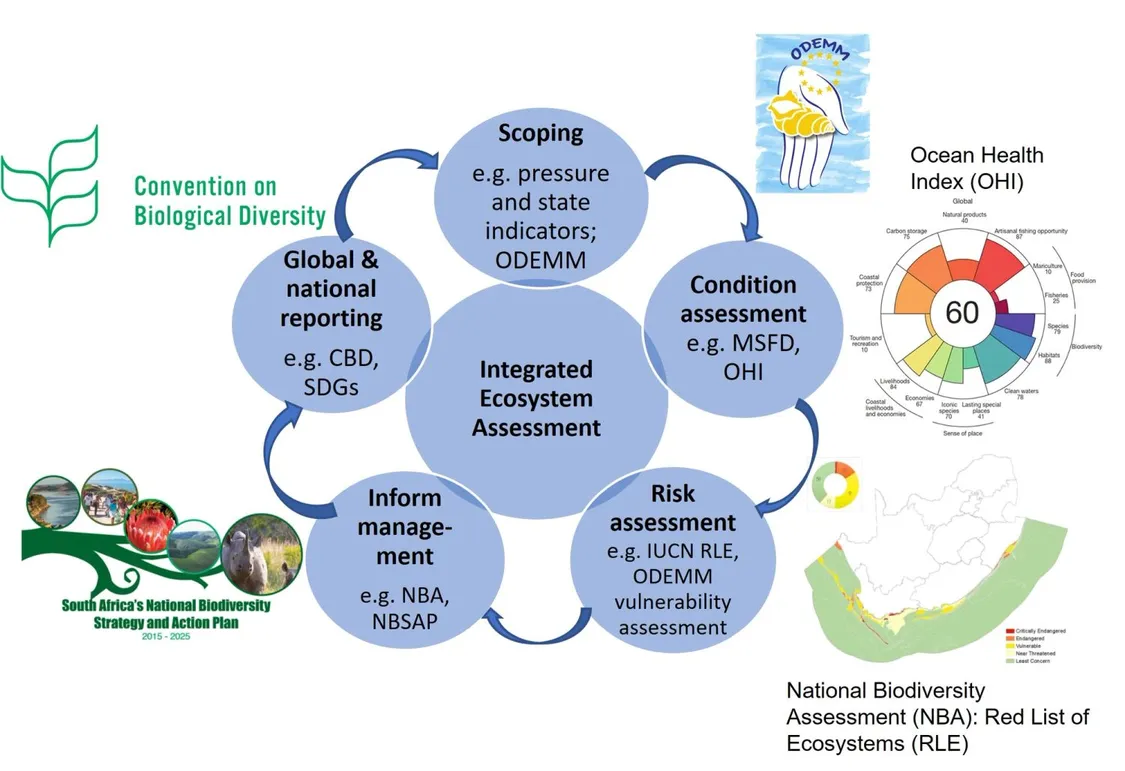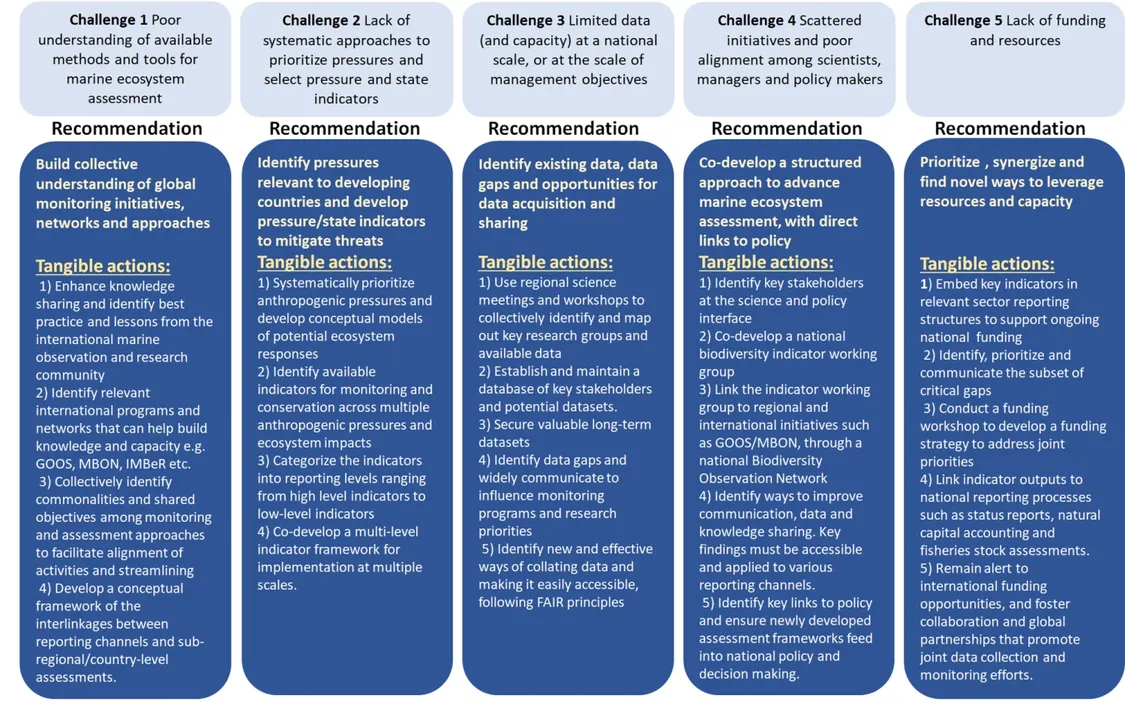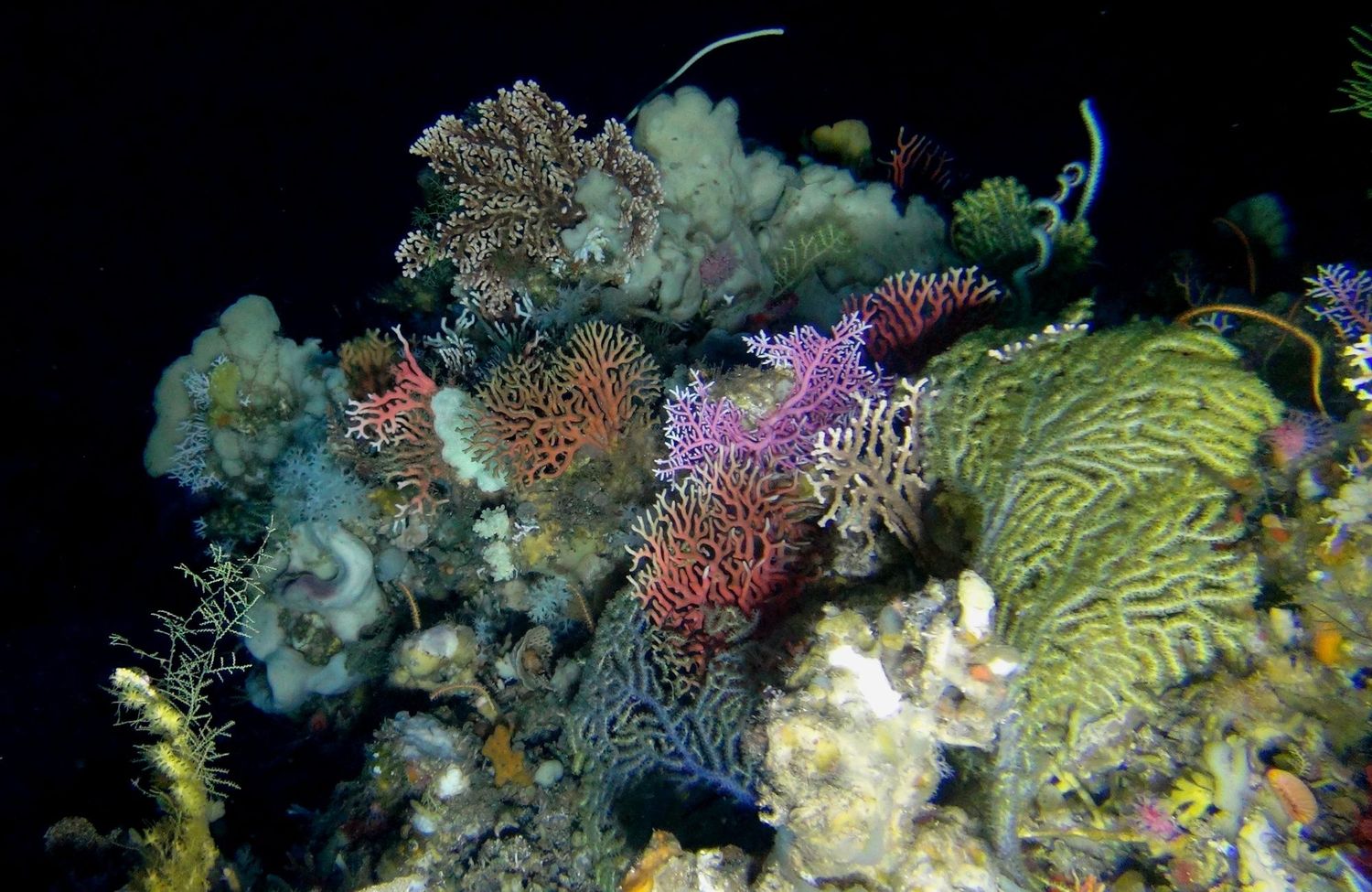By Kaylee Smit (SANBI)
Even though we’ve had all the elements, to some degree, of an Integrated Ecosystem Assessment (IEA) in South Africa, largely through the efforts of the National Biodiversity Assessments (NBA) and government reporting over the years; we lack a coordinated structure to combine all the necessary components following a well-established, standardised international framework. Furthermore, there is a need to advance certain elements (e.g. ecosystem assessments) of the IEA for improved marine and coastal management.
As the MISSION ATLANTIC project kicked off in September 2020, the South African team working in the Southern Benguela case study threw themselves into the activities of Work Package (WP) 1, initiating the Options for Delivering Ecosystem-Based Marine Management (ODEMM) approach to build on existing pressure scoring methods in South Africa. It then became apparent that we would need a set of pressure and state indicators, informed by the semi-quantitative prioritisation process, to determine the key drivers, status, trends, and tipping points of ecological components of the case study. This constitutes the main activities for WP5 of MISSION ATLANTIC, which comprises the ecosystem assessment component of the IEA (Levin et al. 2018). South Africa lacks a standardised national marine ecosystem assessment and indicator framework. Thus, at this point, we realised we needed to go back to the drawing board.
We were left asking, what (and how) do we need to measure to determine marine ecosystem status and change over time? And before we could decide on the types of indicators to use for WP5, there was a need to provide a joint understanding on the types of approaches, methods and tools available for marine ecosystem assessments and to identify international best practices that we could apply in a local context. Therefore, we decided to start our MISSION ATLANTIC journey with a national workshop: “Harmonising marine ecosystem assessments to develop an indicator framework to support ocean science, environmental reporting and to inform policy (more info here)”. The aim of the workshop, held in October 2021, was to improve and align marine ecosystem assessment methods for application at multiple scales in South Africa, the Southeast Atlantic and the Western Indian Ocean. The workshop laid the foundation to identify opportunities, methods and data to link and support ecosystem assessments as a first step towards the development of an assessment and indicator framework.
The workshop provided an important first step in bringing key stakeholders from 11 different institutions together to provide a joint understanding of different marine projects and how they support ecosystem assessments and to engage in important discussions across realms and ecosystem types. This was the first real introduction to the Mission Atlantic project and the identification of potential linkages to the NBA. To achieve the objectives of the workshop, a series of presentations were given to provide an overview of the different types and approaches to marine ecosystem assessments. This included the MISSION ATLANTIC ODEMM approach presented by Professor David Reid, the IndiSeas project and fisheries ecosystem indicators presented by Lynne Shannon and Emma Lockerbie, science-policy co-development of biodiversity assessments for the EU Marine Strategy Framework Directive (MSFD) presented by Abigail McQuatters-Gollop, and local examples provided by Kerry Sink (the NBA and IUCN approach), Andrew Skowno (the proposed biodiversity monitoring framework) and Kaylee Smit (ground truthing national ecosystem maps). Drawing from key outputs from the workshop, a conceptual framework harmonising different assessment approaches while addressing key reporting and management objectives was developed and are shown below in Figure 1. This framework would incorporate the Options for Delivering Ecosystem-Based Marine Management (ODEMM) approach from MISSION ATLANTIC as an initial scoping phase, where key sectors and pressures would guide action for ecosystem condition assessments (potentially supported by the complimentary MSFD and OHI approaches), to advance the IUCN Red List of Ecosystem assessment to provide an updated ecosystem threat status map. Key findings will inform marine management and feed into policy (e.g. SA National Biodiversity Strategy and Action Plan), and inform global and national reporting.

Figure 1 Outputs from the workshop enabled the identification of a proposed framework for harmonising current and new assessment approaches to advance a broad integrated ecosystem assessment framework for the South African case study.
The workshop provided the opportunity to identify key challenges, recommendations, and priority actions, outlined in Figure 2, to advance marine biodiversity monitoring and ecosystem assessment in South Africa, which were drafted into a roadmap and submitted for publication, as a Perspective Article, to Frontiers in Marine Science. The roadmap aims to guide developing and developed countries, and support global best practices and networks to advance marine and coastal monitoring and ecosystem assessment at multiple scales and for multiple reporting objectives. Successful implementation of the proposed recommendations and actions will lead to a more inclusive, coordinated, and holistic approach to managing marine and coastal resources. The solution is to not reinvent the wheel but to apply international best practices in a local context to harness available data and capacity in a joint approach towards identifying key indicators that can be used for multiple objectives.

Figure 2 Five key challenges that hinder progress for national marine ecosystem assessment in developing countries, and a set of recommendations (in bold text at the top of each pillar) and priority actions needed to overcome them.
This is what we hope to achieve at the end of our MISSION ATLANTIC journey. Stay tuned for more news and updates from the Southern Benguela case study on missionatlantic.eu.
